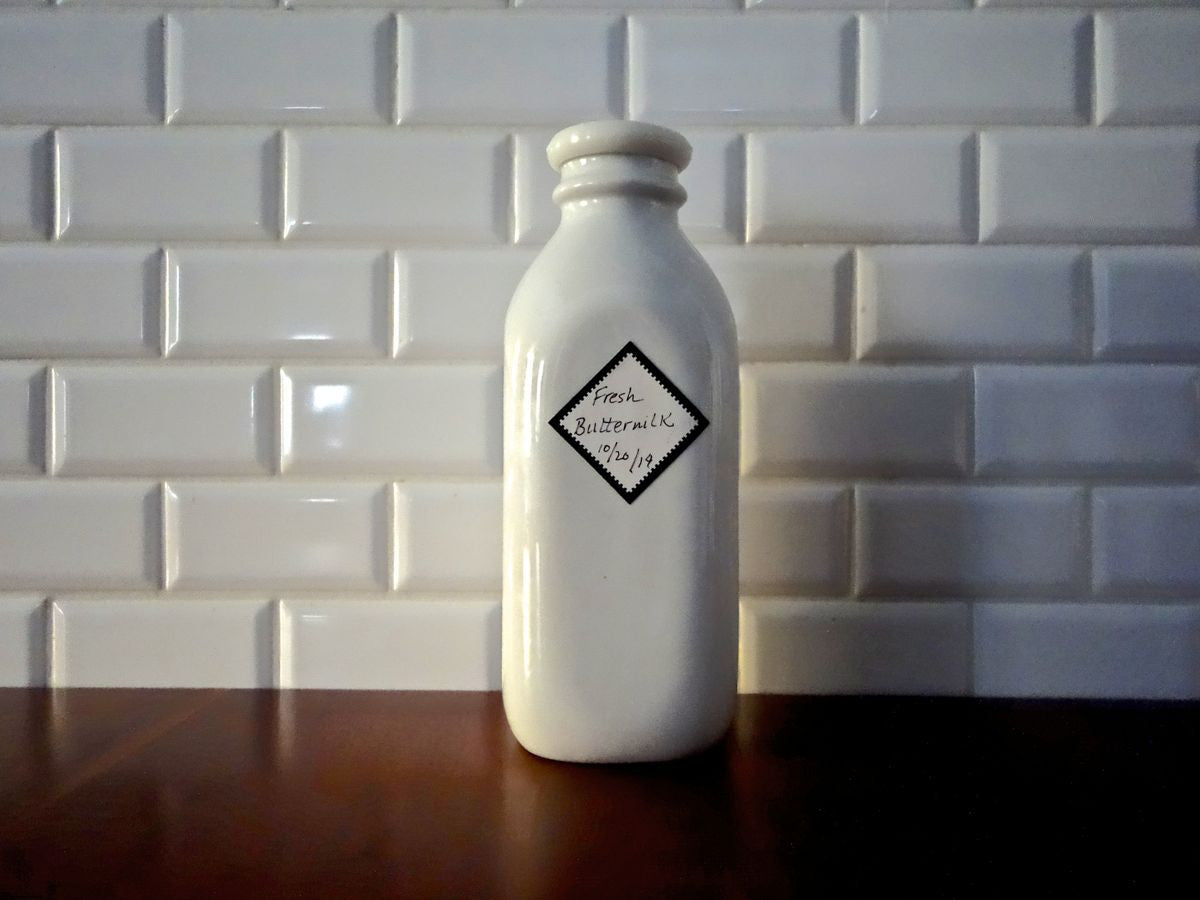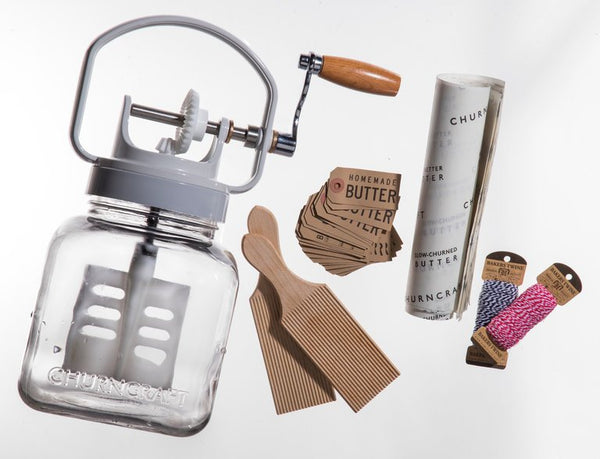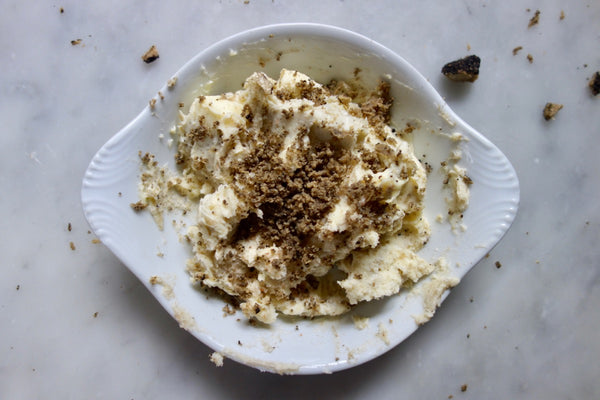Your Cart is Empty

What is buttermilk? As a die-hard butter lover, I stand by the traditional form of buttermilk, the delicious byproduct of hand-churning your own butter. Butter-making is one of the few culinary processes that starts with one ingredient and results in two.
When you churn your own butter, you use heavy cream. With agitation, the cream slowly turns into whipping cream, then clabbered cream with globules of butter and, finally, solid butter swimming in a pool of liquid. This liquid is buttermilk and it is awesome.
Today, buttermilk is most often made by commercial dairies. Looking at the ingredients list of store-bought buttermilk, one can instantly tell how processed commercial buttermilk is. It is essentially cultured low-fat milk mixed with a ton of unnatural additives, like emulsifiers and carrageenan. One can make buttermilk by culturing milk, but it won’t taste the same as real buttermilk.
Why do we use buttermilk in cooking?
Buttermilk is used in cooking for several reasons. Before baking powder was invented, bakers always used buttermilk in tandem with baking soda. When mixed together, the two ingredients produce carbon dioxide which results in the fluffiest pancakes and highest-rising biscuits.
1. When used in baked goods, the acidity in buttermilk helps activate leavening agents, like baking soda and yeast. It adds a rich, creamy flavor.
2. It can break down the tough, fibrous strands of gluten, improving the texture of baked goods.
3. Bakers often opt for buttermilk because it prevents the discoloration of fruits and nuts in baked goods. Also, baked goods brown easily in an alkaline environment – using buttermilk helps achieve that golden brown.
4. The acidity helps tenderize meat, particularly poultry, when used in a marinade. The unique, tangy flavor can’t be achieved with other ingredients.
5. It is low in calories and high in nutrients. All of the active Lactococcus Lactis cultures in it are good for you.
Comments will be approved before showing up.


What an honor to be featured in The New York Times! We are so proud to have gotten a stamp of approval from Florence Fabricant, food critic of the NYT.
